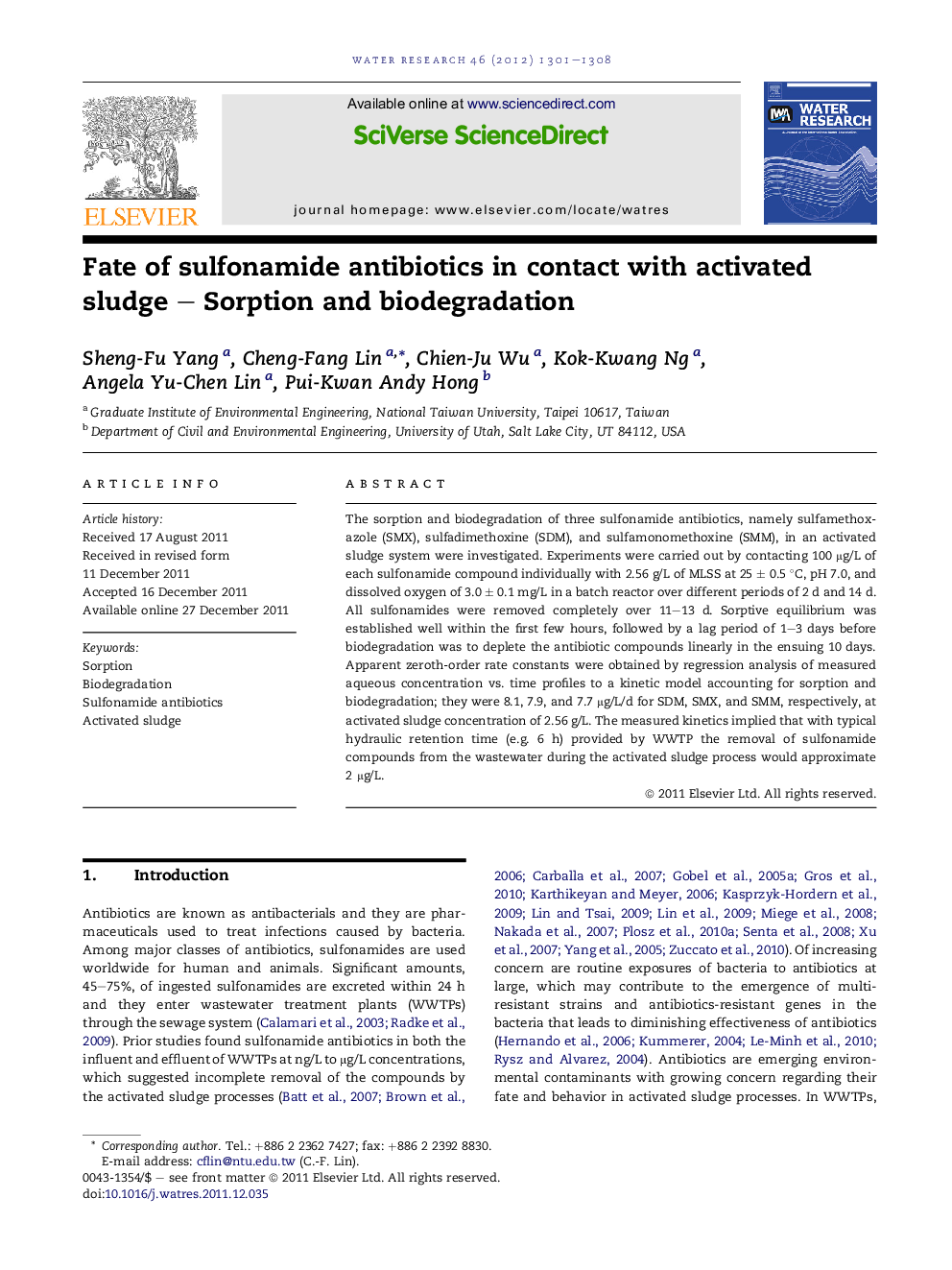| Article ID | Journal | Published Year | Pages | File Type |
|---|---|---|---|---|
| 4482897 | Water Research | 2012 | 8 Pages |
The sorption and biodegradation of three sulfonamide antibiotics, namely sulfamethoxazole (SMX), sulfadimethoxine (SDM), and sulfamonomethoxine (SMM), in an activated sludge system were investigated. Experiments were carried out by contacting 100 μg/L of each sulfonamide compound individually with 2.56 g/L of MLSS at 25 ± 0.5 °C, pH 7.0, and dissolved oxygen of 3.0 ± 0.1 mg/L in a batch reactor over different periods of 2 d and 14 d. All sulfonamides were removed completely over 11–13 d. Sorptive equilibrium was established well within the first few hours, followed by a lag period of 1–3 days before biodegradation was to deplete the antibiotic compounds linearly in the ensuing 10 days. Apparent zeroth-order rate constants were obtained by regression analysis of measured aqueous concentration vs. time profiles to a kinetic model accounting for sorption and biodegradation; they were 8.1, 7.9, and 7.7 μg/L/d for SDM, SMX, and SMM, respectively, at activated sludge concentration of 2.56 g/L. The measured kinetics implied that with typical hydraulic retention time (e.g. 6 h) provided by WWTP the removal of sulfonamide compounds from the wastewater during the activated sludge process would approximate 2 μg/L.
Graphical abstractFigure optionsDownload full-size imageDownload high-quality image (115 K)Download as PowerPoint slideHighlights► Sorption and biodegradation are removal mechanisms of sulfonamides in activated sludge process. ► Sulfonamides decrease from 100 μg/L with a zeroth-order rate constant of about 8 μg/L/d. ► Sulfonamides degrade completely if sufficient contact time is allotted.
